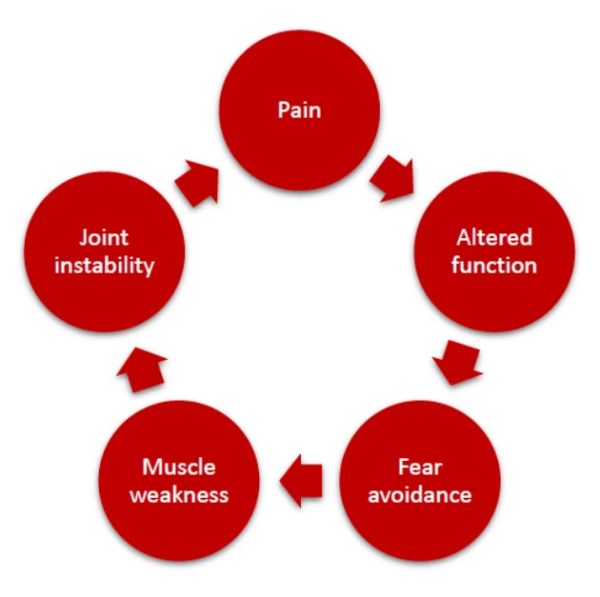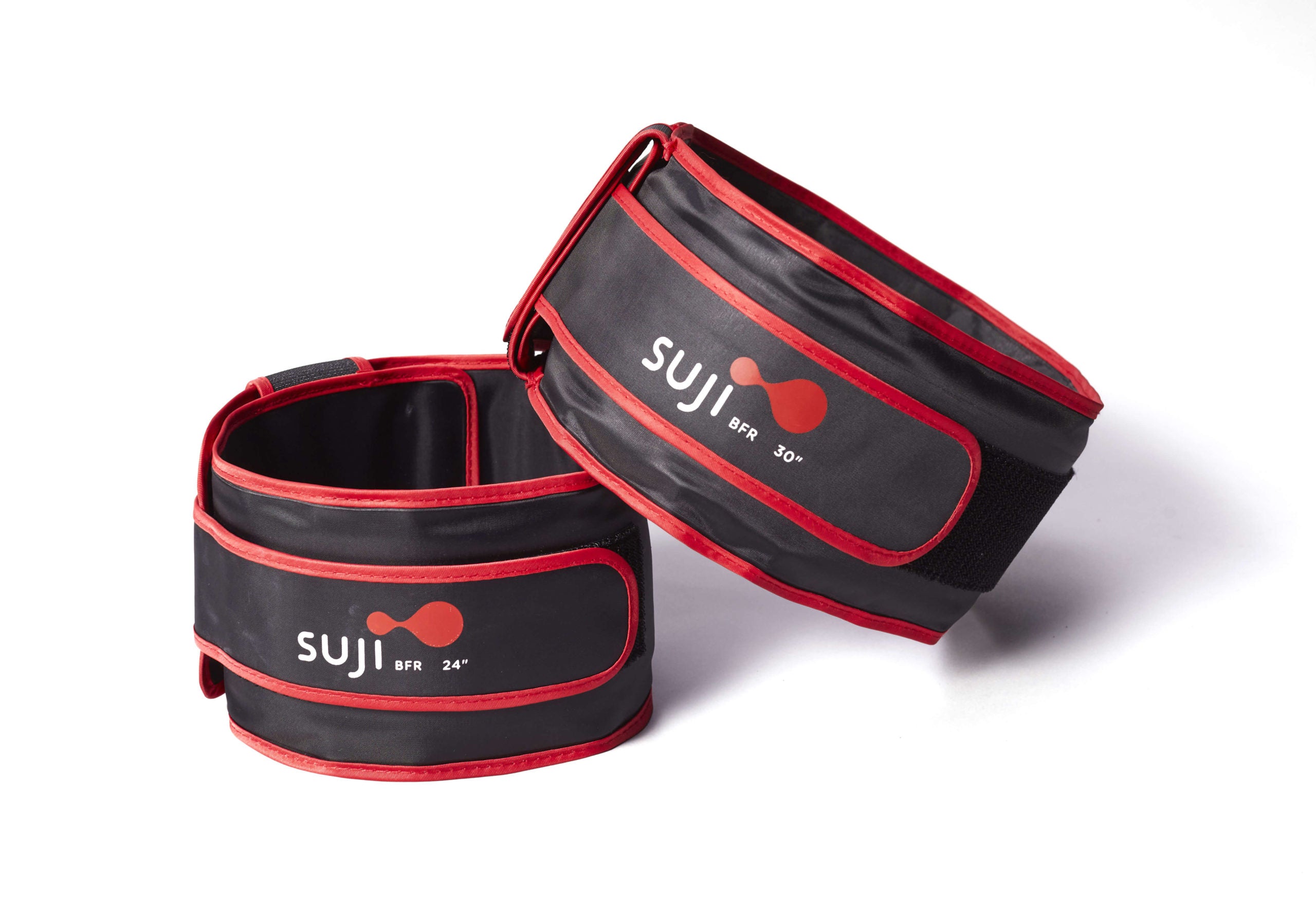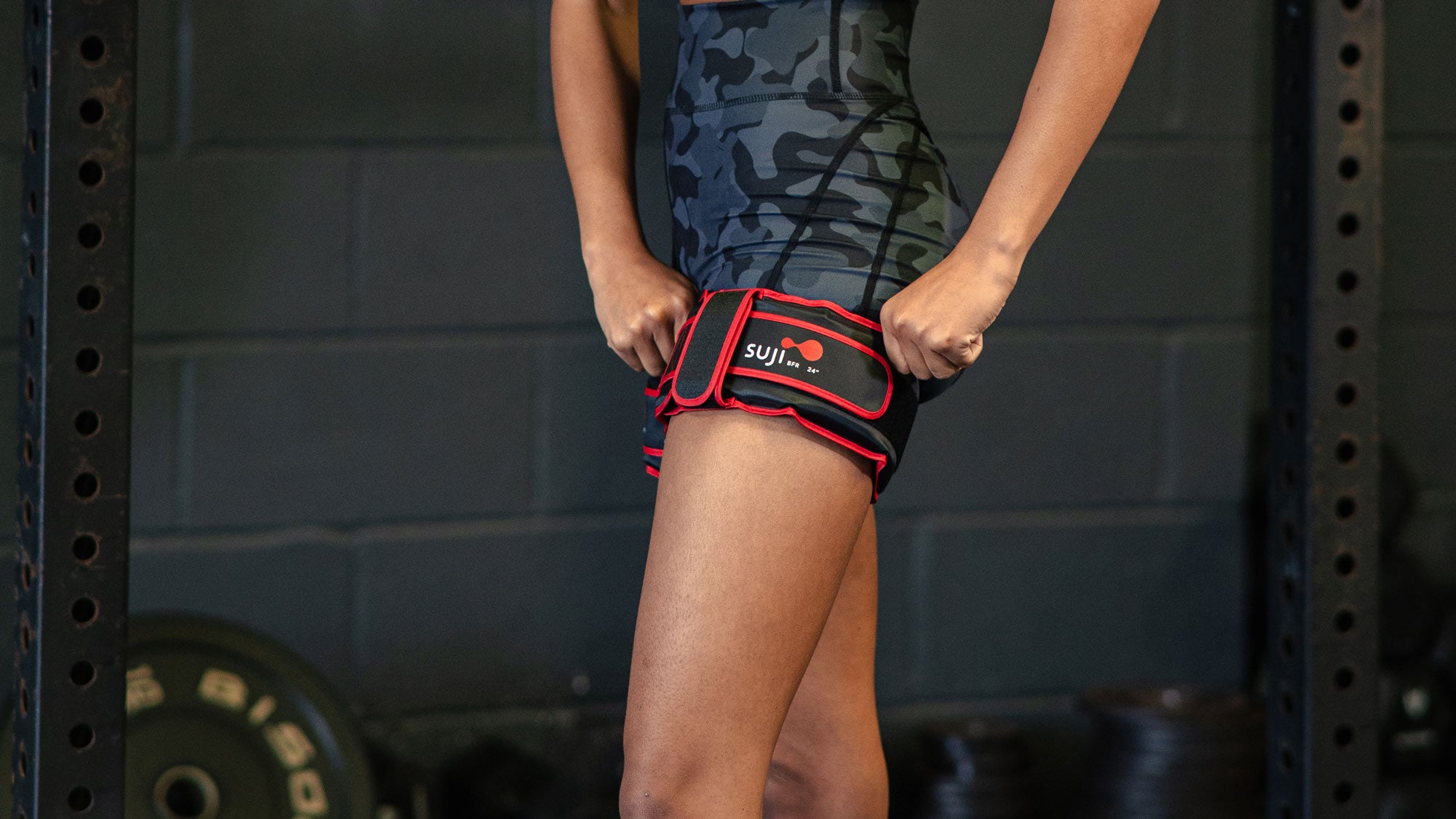Exercise has the capacity to relieve, and decrease sensitivity to muscle and joint pain. This is called exercise-induced hypoalgesia (EIH) and is common in many clinical conditions. Experimental pain studies have demonstrated that localized joint pain leads to a decrease in muscle function, impaired motor control and fear avoidance behavioural patterns (avoiding painful activities). Collectively, this can trigger a vicious cycle of spiralling physical function that can increase the risk of developing chronic and degenerative conditions such as osteoarthritis (Figure 1). Exercise interventions that can appropriately load the injured area, relieve pain and increase muscle strength, presents as an effective management system to target the multiple factors of these complex conditions.

Figure 1: Pain can trigger a cycle of fear avoidance behaviours and impaired physical function.
BFR exercise and hypoalgesia:
While traditional resistance exercise has the capacity to relieve pain and increase muscle strength, this form of training may also increase load through the injured area and potentially aggravate symptoms. The American College of Sports Medicine
(ACSM) recommends training loads of 60-70% of a 1-repetition maximum (1RM) to increase muscle strength. Blood flow restriction training has the capacity to increase muscle strength and hypertrophy using much lower training loads, as little as 20% 1RM (
What is blood flow restriction training?). For this reason, BFR has been utilised as an exercise strategy in several clinical musculoskeletal conditions including; patellofemoral pain, Achilles tendinopathy, ACL reconstruction, polymyositis and osteoporosis.
Does it work?
The majority of research exploring the BFR and hypoalgesia has been conducted in knee pain. A land mark study by Korakakis et al. (2018) explored the use of BFR in 30 male patients suffering from anterior knee pain. In response to BFR, pain scores were significantly reduced while performing 3 common functional tasks; a shallow single leg squat, a deep single let squat and a step down task. These findings suggest BFR may have 2 key benefits for this population:
- The BFR intervention caused a reduction in pain symptoms for 45 minutes. Used as a pre-exercise strategy this may permit the completion of a traditional resistance exercise training program to increase muscle mass and strength.
- BFR is a potent stimulus for muscle hypertrophy and muscle strength, and has the potential to break the cycle of pain, fear avoidance and decreased function.
While the research exploring BFR and hypoalgesia is in its infancy, these results have been replicated in various studies and within multiple pain states.
Mechanisms of action:
While there is growing evidence supporting the use of BFR in pain management, how and why it is effective remains speculative. A recent review by Hughes and Patterson (2019) explored some of the potential mechanisms by which BFR may influence pain, which are described below.
Conditioned pain modulation:
The simplest way to describe conditioned pain modulation is with the expression 'pain cures pain'. The old wives tale suggesting to pinch your ear before receiving an injection to distract yourself likely rings true. Within the conditioned pain modulation paradigm, a painful conditioning stimulus, may inhibit the perceived pain of a secondary stimulus. Conditioned pain modulation has been shown to be a key component of EIH, with the concept of a painful exercise intervention being a vital component dictating its effectiveness. While BFR is characterised by low-intensity training, perceptions of pain and discomfort comparable to high intensity exercise are consistently reported in the literature.
Recruitment of fast twitch muscle fibres:
The recruitment of fast twitch muscle fibres is a key characteristic of high intensity exercise. It also appears to be an essential component of EIH. This may provide a rational as to why high intensity exercise is more effective at triggering a hypoalgesia response than low intensity exercise. BFR creates a hypoxic environment within the muscle, simulating the conditions of high intensity exercise at lower working thresholds. This causes the preferential recruitment of fast twitch muscle fibres during low intensity exercise, which may be both an important mechanism behind BFR and hypoalgesia, and an important component of BFR and hypertrophy.
Opioid and endocannabinoid systems:
BFR exercise causes an increase in metabolites such as lactate within the muscle. These metabolites stimulate the production of opioids and endocannabinoids. Opioids are a family neuropeptides produced within the nervous system. Specifically beta-endorphine is thought to play a key role in EIH. Endocannabinoids are derived from lipids, specifically arachidonic acid, a polyunsaturated omega-6 fatty acid. Several endocannabinoids increase in response to high intensity exercise and likely have an important analgesic effect.
Increased heart rate and blood pressure:
Regions of the brain controlling the cardiovascular system (heart rate and blood pressure) overlap with regions contributing to pain sensitivity. Interestingly, elevated blood pressure and heart rate is often associated with a reduction in pain sensitivity. BFR increases the stress on the cardiovascular system compared to exercise-matched controls, and is comparable to high intensity exercise.
BFR exercise protocols:
To the authors knowledge, there is currently no literature exploring the effectiveness of different BFR protocols on pain perception. Anecdotally there are several things to consider when deciding upon a protocol:
-
Purpose of the session: BFR is currently being used in a wide range of settings. It is currently being used in clinical populations to alleviate pain to allow for optimal rehabilitation, equally, it is being used in elite level sport as a warm up strategy for training and competition for athletes managing pain. While pain and exercise intensity appear to be key components of BFR and hypoalgesia, if preparing for competition, the implications of fatigue post-BFR training need to be considered. Warm up protocols should be performed with longer and more frequent reperfusions (deflate the cuff) to permit adequate recovery.
-
Good pain vs. bad pain: Managing pain, particularly chronic pain, is incredibly complex and often requires a highly refined exercise regiment. As mentioned above, pain appears to be a key component of many of the mechanisms that lead to EIH. However, inappropriate loading of muscle and joint injuries is also likely to exacerbate pain. If the discomfort that you experience during the exercise does not immediately subside post the session, you may need to consider reducing the intensity of your session to a more tolerable level.
The final word:
BFR exercise presents a promising training strategy to manage both acute and chronic pain states. It is widely viewed as an effective strategy in musculoskeletal rehabilitation and there is growing evidence for its value in reducing pain. While there remains much to learn around how and why it may be effective, there is sufficient evidence to get your cuffs on and see if it can be a valuable addition to your training or rehabilitation.
References:
Korakakis, V., et al.,
Blood Flow Restriction induces hypoalgesia in recreationally active adult male anterior knee pain patients allowing therapeutic exercise loading. Physical Therapy in Sport, 2018.
32: 235-243.
https://pubmed.ncbi.nlm.nih.gov/29879638/ Hughes, L., and Patterson, S. D.,
Low intensity blood flow restriction exercise: Rationale for a hypoalgesia effect. Medical Hypotheses, 2019.
132: 1-7.
https://www.sciencedirect.com/science/article/abs/pii/S0306987719307364 Figure 1: Pain can trigger a cycle of fear avoidance behaviours and impaired physical function.
Figure 1: Pain can trigger a cycle of fear avoidance behaviours and impaired physical function.



Leave a comment
This site is protected by hCaptcha and the hCaptcha Privacy Policy and Terms of Service apply.